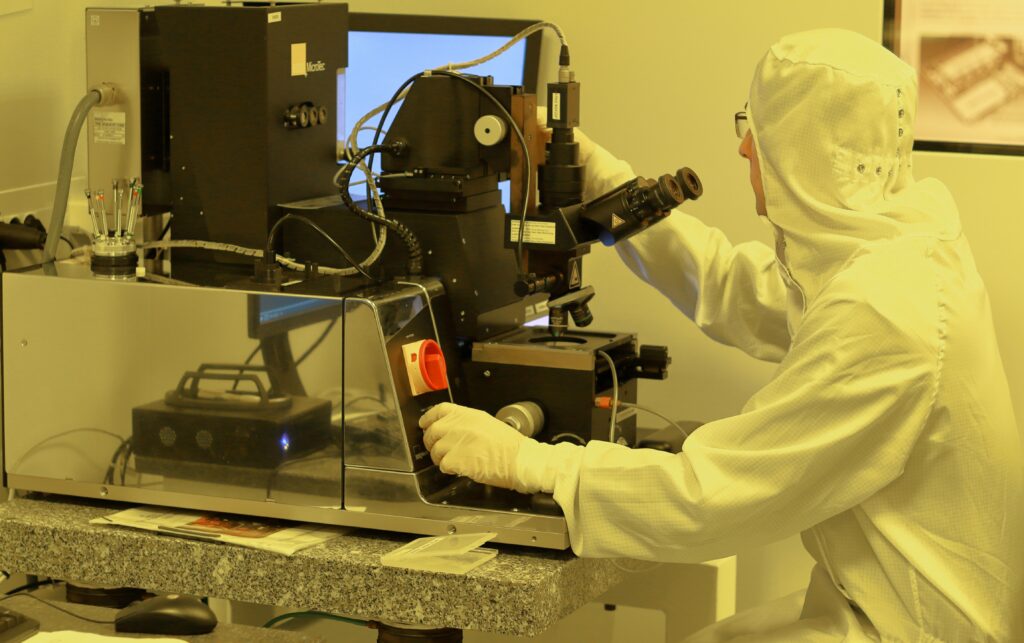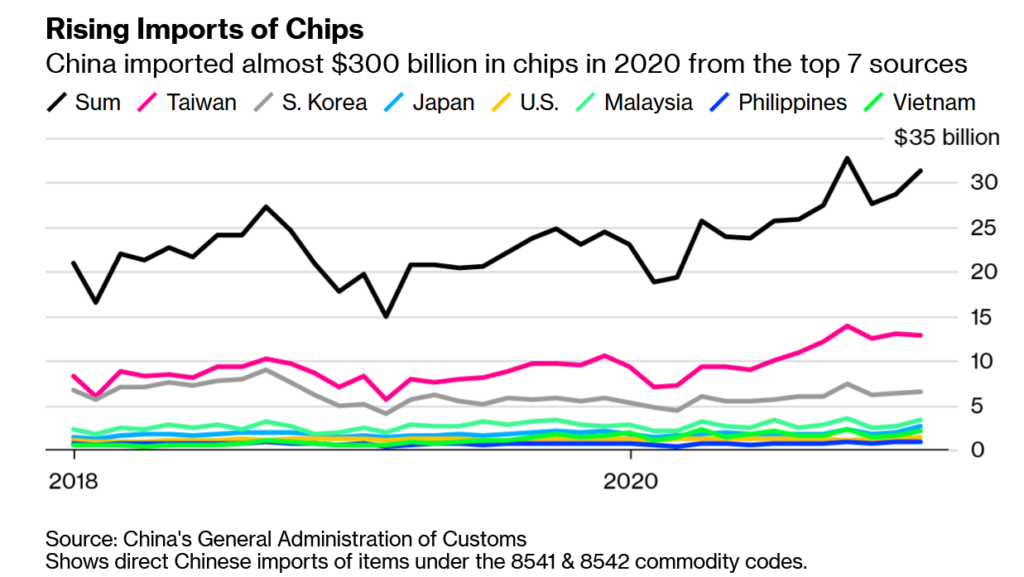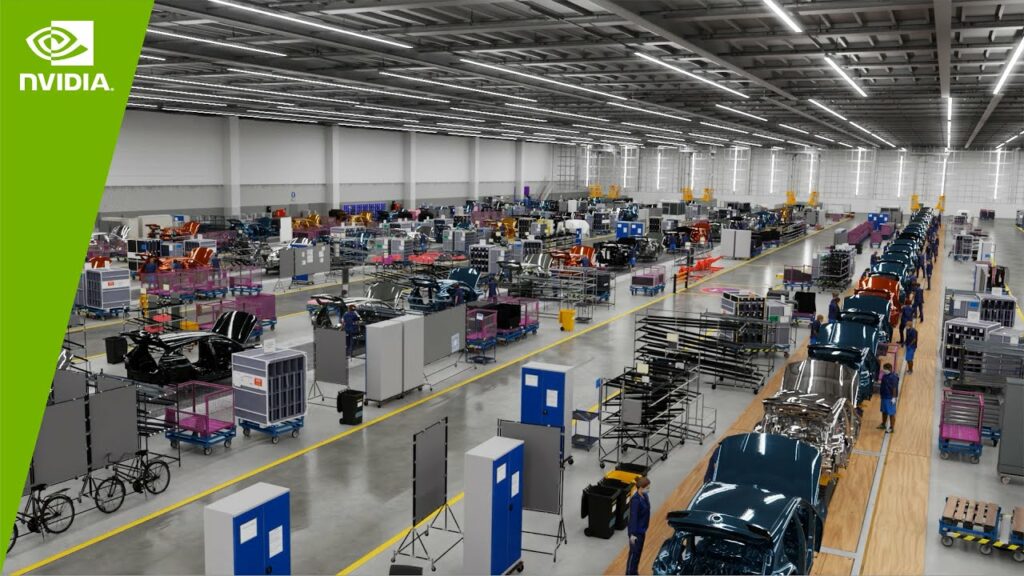The Global Semiconductor Chip Shortage: Everything You Should Know
In the past several months, a semiconductor shortage has changed a lot in the IT industry. If you’ve tried to buy a graphics card recently, you would know. To clarify, the shortage of a six-decade-old invention that has found a home in simple computers and devices, and reached the biggest and most expensive machines is causing trouble across the world.
The global chip shortage has the grabs over the world as demand for semiconductors has spiked way beyond the pre-existing supplies. In the same vein, the shortage has affected everything from smartphones and all the way up to cars.
Which ‘chips’ are we talking about?

The “chips” are basically made of integrated electronic circuits sitting on top of a small silicon wafer. They’re mostly used to regulate the flow of electricity and are figuratively used everywhere. Moreover, these are commonly known as semiconductor chips or microchips.
“Why are these even important,” you ask? For starters, these semiconductor chips can house billions of transistors – meaning they’re small, and they’re efficient. Integrated circuit (ICs) chips have so many use cases that it’s a hard task to even count them.
Integrated Circuits are a part of all devices that has some level of microprocessor control, meaning they’re essential in CPUs/APUs, GPUs, and most portable devices. Their sophisticated development as a tiny package is the cause for their widespread usage.
Hence, these immediate benefits have made microchips vital. As of now, quite a large number of technologies simply cannot function without them.
Why is there a chip shortage in the first place?
The chip shortage has been all over the internet ever since the pandemic began last year. However, there are various reasons – big or small that have severely contributed to the global chip shortage.
The pandemic and issues of manufacturers
Firstly, there’s no doubt that the most obvious reason for the shortage is the Covid-19 pandemic. As soon as governments worldwide imposed lockdowns, the Work From Home and Online Education culture began. And with them, began the need for more laptops, PCs, external monitors, and whatnot.
But how could these menial expenditures cause a global issue? In simpler terms, most, if not all households spent on electronics after the pandemic began and companies also supplied the required hardware to their employees.
Consequently, the demand for electronics housing silicon chips skyrocketed and there obviously wasn’t enough supply. We’ve seen GPU prices go unexplainably high, but it’s real. Companies are unable to deliver products at the same pace and price as before; it’s mainly because employees are working from home. For instance, manufacturing has taken a great hit because physically operating factories at full capacity has been a demanding job lately.
If that wasn’t enough, supply chains are likely to stay disrupted for another year as the demand is constantly increasing still and it only adds to the backlog for manufacturers. That said, it’s safe to assume that Covid-19 has taken a big toll on the semiconductor industry.
Further, a severe water shortage in Taiwan affected the Taiwan Semiconductor Manufacturing Company (TSMC), one of the most substantial companies in the world that produces semiconductor chips. To get a fair idea about the significance of the company, TSMC produces Apple’s M1 chips and NVIDIA’s parts. That is to say, TSMC is quite capable but has taken a big hit.

Speaking specifically about the U.S., their recent trade war against China forced them to stop relying on Chinese semiconductor chip manufacturers. Hence, the country’s only alternatives were TSMC and Samsung. With the added load, both of them could only do so much.
GPUs and cryptocurrency
The spotlight has shifted to GPUs and the infamous cryptocurrency trends for everyone recently. If you know anything about PC parts and/or GPUs, you certainly would have heard about the spike in GPU prices. Since the end of 2020, GPU prices have a similar graph as Bitcoin and Ethereum.
Contextually, ever since Ethereum’s bump up in 2017, GPU prices have seen a steady increase which is a precise follow-up of Ethereum’s price. Further, fast forward to another crypto market boom starting at the end of 2020, GPU prices reached new heights yet again which is pretty accurate. Cryptocurrency mining has reached an all-time high in its history.
Miners hoarded GPUs as shepherds herd sheep. The rush of crypto miners stockpiling GPUs in bulk only meant one thing – no stock left for regular consumers. Likewise, some people started selling GPUs unofficially in the black market, and that too at insanely high rates.

Coming to regular consumers, the PC market saw its most substantial growth of 13.1% since the last spike a decade ago. However, seeing the catastrophic rise in GPU prices, veteran PC users couldn’t upgrade.
Moreover, NVIDIA and AMD released their next-in-line GPU series, but not everyone could get it. Companies like NVIDIA and AMD have to order chips in advance to produce GPUs. Although, when there’s a shortage of this scale, it’s obvious that graphics card production took a hit.
Hence, the availability of newer GPUs has been scarce for a while. At the same time, a critical DRAM memory module shortage came into being because of the same issues in Taiwan. DRAM modules are core components used in various hardware, such as graphics cards and SSDs.
In conclusion, the demand for graphics cards skyrocketed because of the cryptocurrency trends. To compensate for that, the ramped-up production required more semiconductor chips which have a major part to play in the chip shortage.
Who is affected by the semiconductor shortage?
A wide variety of industries are affected by the said chip shortage. From smartphones to automobiles. Samsung, the South Korean tech giant, said that the shortage has affected its television and appliance production. Also, during Apple’s Q3’2021 earnings call, CEO Tim Cook was fret by the fact that the shortage could impact Apple’s iPad and iPhone product lines.
Microsoft also called out a decline in Windows OEM revenue by 4%, caused directly by disruption of supply chains. Microsoft’s next-gen consoles, Xbox Series X/S, and Sony’s PlayStation 5 have been announced for quite a while but availability is scarce for both brands.
Significantly, NVIDIA and AMD took a hit as mentioned before. The GPU shortage caused regular consumers such as gamers to pay an overhead sum of money. Paying an amount that is high above MSRP (Manufacturer’s Suggested Retail Price) being charged by importers and distributors might not be the best choice for everyone. AMD CEO Lisa Su highlighted in a public interview that the company’s supply could stay tight for the better part of 2021.

Coming to the automobile industry, the production and supply chains took a major hit. Shortage of chips will impact the car market till 2022. Bloomberg reported that to cope with the chip shortage, carmakers are now leaving out high-end features. Automobile giants such as Ford, Volkswagen, Renault, and more are hit hard and are down bad. Toyota is reducing its production in Japan and North America because of the same.
Although, there’s a silver lining to this. The world hasn’t lost hope and is finding workarounds to get around the shortage problem. For instance, Tesla redeveloped its entire software to substitute semiconductor chips, as reported by The Verge. On another hand, AMD increased its expenditure on the manufacturing department such that the supply chains thrive. That said, NVIDIA even halved the hash rate on its RTX 3060 GPUs to prevent miners from exploiting them.
When will this distress come to an end?
Everyone, a company or an individual who holds a significant authority in the tech industry has an opinion on how and when this semiconductor chip shortage will end. The key takeaway is – it’s not ending soon enough. Experts say that the problem isn’t going to get a quick fix, and it’s only natural for a crisis this large.
The CEO of chipmaker STMicroelectronics, Jean-Marc Chery, said the shortage will likely last at least two years. “Things will improve in 2022 gradually,” Chery said, “but we will return to a normal situation … not before the first half of 2023.”
NVIDIA’s CEO, Jensen Huang earlier said that the GPU shortage would last until the end of 2021. However, Huang added, “I would expect that we will see a supply-constrained environment for the vast majority of next year is my guess at the moment,” in a call spotted by Videocardz.
After Intel’s quarterly earnings call, CEO Pat Gelsinger said that the global semiconductor microchip shortage could last into 2023 when the industry is able to completely catch up with the demand.
TSMC hiked its chip prices by 10% since last year. And now, the chip manufacturer is back at it. The company plans to increase the price of its advanced chips (7nm and below) by almost 10%. Furthermore, chips built on 16nm and above nodes might see a hike as high as 20% according to a report by DigiNews, first discovered by Tom’s Hardware.
Personally, I think this is too crucial of a problem to ignore, and the pandemic has caused a disruption in all industries that exist. We should see a relapse into the normal state in the coming years.
Conclusion
In conclusion, the semiconductor microchip shortage is as real as it gets, and an issue for various industries which ultimately leads to a bad economy. Everyone, including regular consumers, is affected. In the past few months, most brands have hiked car prices. Smartphones, even the budget ones are experiencing price hikes.
In addition, GPU prices are way up and it’s really a bad time to build PCs. In simpler terms, the crisis is far from over and might spread to other industries too. We could see things going back to normal by 2023. However, the world is still trying to get around the problem and find workarounds and substitutes wherever possible.






